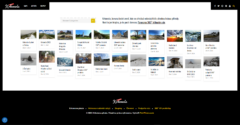Gateway Pages vs. Landing Pages: Identifying the Differences and When to Use Each
In the rapidly evolving digital marketing landscape, understanding the diverse strategies that drive traffic and convert visitors into customers is crucial. Two widely discussed and often confused concepts are gateway pages and landing pages. While both serve to enhance online marketing campaigns and improve user experience, they have distinct roles and applications. Here’s a breakdown of what they are, how they differ, and when to use each.
Gateway Pages: An Overview
Gateway pages, also known as portal or doorway pages, are designed primarily for search engine optimization (SEO). They are created to rank highly for specific keywords and act as a funnel, redirecting visitors to the main website or a particular section of it. Their main goal is to capture traffic from search engines and direct it to the more relevant pages where users can find the detailed information they seek or complete a desired action.
Key Characteristics of Gateway Pages:
- SEO-focused, optimized for specific keywords
- Serve as an entry point to guide users deeper into the website
- Less about direct conversions, more about improving site visibility and traffic
Landing Pages: An Overview
Landing pages, on the other hand, are all about conversions. Designed with a single focus or goal in mind, such as generating leads, selling a product, or gathering email subscribers, these pages aim to persuade visitors to take a specific action. Unlike gateway pages, landing pages are often standalone, not necessarily integrated into the site’s navigation, and are tailored to target audiences from various channels like paid ads, email marketing, or social media campaigns.
Key Characteristics of Landing Pages:
- Conversion-focused, aiming to turn visitors into leads or customers
- Contains clear and compelling calls-to-action (CTAs)
- Typically used in paid advertising and direct marketing campaigns
Differentiating the Use Cases
When to Use Gateway Pages:
Gateway pages come into play when the objective is to improve organic search visibility for specific queries and direct potential customers to your website. They are beneficial for businesses targeting a broad keyword portfolio or entering new markets.
When to Use Landing Pages:
Landing pages prove most effective when you’re looking to maximize conversions from targeted marketing campaigns. They are ideal for promoting specific products or services, capturing leads, and conducting A/B testing to understand customer preferences better.
Benefits of WebsiteURL.org
WebsiteURL.org stands out as a powerful ally in leveraging both gateway pages and landing pages effectively. Here are some of the platform’s benefits:
-
SEO Tools and Analytics: WebsiteURL.org offers an array of tools and integrated analytics, helping users optimize their gateway pages for search engines, thus enhancing visibility and traffic.
-
Customizable Templates: With a variety of templates, it’s simple to create high-converting landing pages tailored to specific campaign goals, ensuring a seamless user experience and boosting conversion rates.
-
Integration Capabilities: The platform allows for easy integration with other marketing tools and systems, ensuring that data flows seamlessly between your landing pages, CRM, email marketing software, and more.
-
User-Friendly Interface: Boasting a drag-and-drop interface, WebsiteURL.org makes it easy for non-technical users to design and implement effective landing and gateway pages, significantly reducing the time and resources required.
- Dynamic Content and Personalization: It supports dynamic content and personalization, crucial for creating highly relevant and engaging landing pages that resonate with different segments of your target audience.
In conclusion, while gateway and landing pages both play vital roles in digital marketing and SEO strategies, understanding their differences and applications is key to leveraging each effectively. By utilizing a platform like WebsiteURL.org, businesses can take advantage of both page types to drive traffic, improve visibility, and significantly increase conversion rates.





